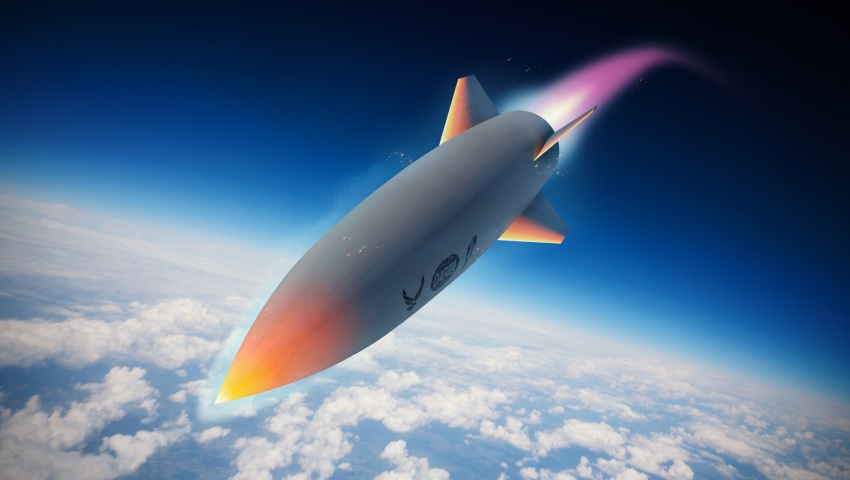The global defence contractor has shed light on a recent flight test of a hypersonic weapon in collaboration with the Pentagon and industry.
Lockheed Martin has announced the successful flight test of the Hypersonic Air-breathing Weapon Concept (HAWC) as part of a collaboration with the Defense Advanced Research Projects Agency (DARPA), Air Force Research Laboratory (AFRL), and Aerojet Rocketdyne (AJRD).
The missile reportedly hit speeds in excess of Mach 5 at a peak altitude above 65,000 feet (just under 20 kilometres).
“Our work with DARPA and AFRL on the HAWC program demonstrates that air-breathing hypersonic systems are a cost-effective solution to address rapidly emerging threats in the global security arena,” John Clark, vice-president and general manager Lockheed Martin Skunk Works, said.
“The success of this flight test is evidence that a strong partnership between government and industry is key to solving our nation’s most difficult challenges and enabling new capabilities to counter threats to US and allied forces.”
In addition to supporting multiple hypersonic systems development projects, Lockheed Martin is integrating digital technology in the design, test and manufacturing process.
This is Lockheed Martin's latest hypersonic missile test, coming less thana year after a demonstration alongside Northrop Grumman.
The test was part of a broader project supporting the US Navy’s Conventional Prompt Strike (CPS) and the US Army’s Long Range Hypersonic Weapon (LRHW) programs.
The companies tested the first stage solid rocket motor, which fired for the full trial duration and reportedly met performance parameters and objectives within anticipated ranges.
Details of the hypersonic missile test have been released just a day after the Commonwealth government revealed the AUKUS security partnership would be expanded to include the development of hypersonic and counter-hypersonic weapons.
“[Hypersonics] and the various technologies that surround hypersonics are very much a part of what the AUKUS partnership is striving to deliver, not just in Australia but in the United States and the United Kingdom as well,” Prime Minister Scott Morrison said.
“Working together, the best technologies, best defence industry, the best of our Defence Forces, ensuring that each of our capabilities is being realised and that goes along with artificial intelligence and quantum.
Just last week (29 March 2022), an Australian consortium was awarded $2.95 million to research reusable hypersonic UAVs. Hypersonix Launch Systems, the University of Southern Queensland, LSM Advanced Composites and Romar Engineering were awarded the grant via the federal government’s Cooperative Research Centres Project (CRC-P) to help develop a reusable UAV that can travel up to Mach 12.
[Related: AUKUS expands into hypersonics, provides submarine update]








